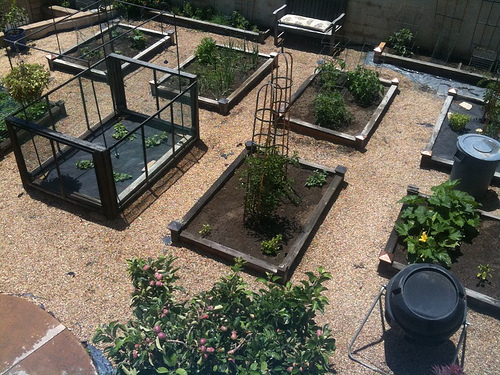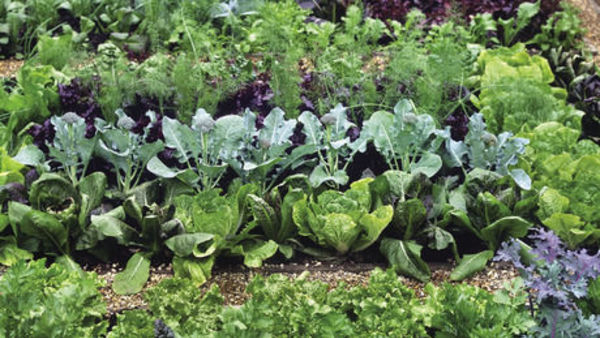
Crop rotation is a fundamental organic gardening practice that’s been proven effective for thwarting pests and diseases in the vegetable garden. It’s not difficult but it does take a little bit of planning. The good news is that many of us are keeping track of our plants and where they’re planted anyway, in which case, it’s no extra effort to give it a try.
There are a couple of crop rotation techniques and gardeners and farmers who use them have their personal favorite. The first way is to plant crops according to individual vegetable families and seems to be the most common rotation technique. The second is based on the nutritional needs of these plants, which is rotating for soil fertility.
Rotating plant families is about changing the beds that crops are grown in from season to season; usually on a 4-year cycle. Rotating crops season after season is a sound organic gardening practice for a couple of reasons. First, this technique preserves biological diversity, which can prevent the build up of diseases in the soil, as well as pests that attack specific crops. Second, crop rotation can prevent the heavy feeders from depleting the soil of nutrients and in some cases, actually improving soil fertility.
Each vegetable plant falls into an extended family and these families share specific enemies (both pests and disease). For instance, fungal diseases such as blight attack potatoes and tomatoes, which are both in the nightshade family. Flea beetles enjoy them, too. Cabbage looper moths and cutworms cause mayhem for brassicas such as broccoli and kale, which belong to the cabbage family. You get the idea.
Let’s say that you have four beds and one of them is planted with lettuce, kale, and broccoli. While these vegetable are growing, they’re potentially calling in pests and diseases that are specific to those crops. Both the pests and the diseases can be harbored in the soil just waiting for the same type of plants to come along again. Give the undesirables the slip by planting them into the second bed next season.
Do the same thing with the remaining beds; move each plant group (family) into the next bed. This doesn’t have to be a perfect four bed formula, buy the way. If you’ve got three garden beds rotate those or you could rotate some of the vegetables out and into containers.
Vegetable Families
Nightshade Family (Solanaceae)
- Tomatoes
- Eggplant
- Peppers
- Potatoes
- Tomatillos
Gourd Family (Curcurbitaceae)
- Cucumbers
- Melons
- Pumpkins
- Squash
- Watermelon
Pea Family (Fabaceae)
- Beans
- Fava beans
- Peas
- Soybeans (edamame)
Beet Family (Chenopodiaceae or Amaranthaceae)
- Beets
- Quinoa
- Spinach
- Swiss chard
Sunflower Family (Asteraceae)
- Endive
- Lettuce
- Radicchio
Mustard Family (Brassicaceae)
- Arugula
- Asian greens (bok choy)
- Broccoli
- Brussels sprouts
- Cabbage
- Collard greens
- Kale
- Kohlrabi
- Mustard greens
- Radishes
- Turnips
Onion Family (Alliacaeae)
- Chives
- Garlic
- Leeks
- Onions
- Shallots
Carrot Family (Apiaceae)
- Carrots
- Celery
- Cilantro
- Dill
- Fennel
- Parsley
- Parsnips
By the way, this can be challenging in very small beds (or containers) and if this is the case for you, don’t worry; it’s not a deal-breaker by any means. You may not have enough beds for this practice, but it’s a good technique to know and you can use the basic strategy in any way you see fit. It’s food for thought (pun intended).


















Comments
Log in or create an account to post a comment.
Sign up Log in